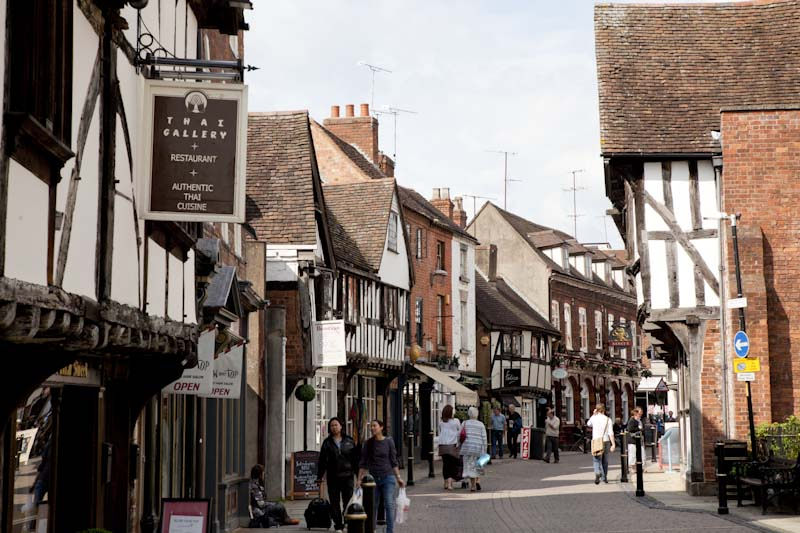The Cathedral, with its 200-foot tower, stands majestically beside the Severn. The 11th century crypt is a classic example of Norman architecture and was built by St Wulstan, who is remembered in a stone carving. He was the only English bishop not to be replaced by a Norman after the Conquest. To many of the local people the task of building the Cathedral must have seemed endless; the central tower collapsed in 1175 and a fire destroyed much of the building in 1203. The Cathedral had only just been re-dedicated after those disasters when Bishop Blois began pulling it
down again, only to rebuild it in the fashionable Gothic style. The nave was rebuilt in the 14th century under the auspices of Bishop Cobham, but the south side was not completed until much later, and in a far less elaborate style. King John requested that he be buried in the choir, and his tomb stands near the high altar. It is a masterpiece of medieval sculpture, showing the King flanked by the Bishops Oswald and Wulstan.
Prince Arthur, elder brother of Henry VIII, is also entombed near the high altar. One of the many stories about the Cathedral concerns the ‘Grumpy Monk’, so grumpy that his brothers decided to get their own back when he died.
They buried him under a step in the cloisters so they could have the satisfaction of treading on him whenever they passed by. He lies there to this day, still being trodden on by visitors. There’s a great deal more to see than the of the Civil War. The story takes in the trial of Charles I, visits a Royalist encampment on the eve of the battle and enacts the last battle of the war narrated by Charles II and Oliver Cromwell. Period rooms offer a fascinating glimpse of the architecture and style of Tudor and Stuart times.
Places to go :
The Greyfriars Friar Street, Worcester WR1 2LZ Tel: 01905 23571 e-mail: greyfriars@nationaltrust.org.uk website: www.nationaltrust.org.uk Built in 1480, The Greyfriars is a beautiful timber-framed merchant’s house located in Worcester city centre. Throughout its history the house has been home to some of the city’s most affluent merchant families.
Saved from demolition in the 1940s, it now houses the fascinating, and somewhat unusual collections of the siblings who rescued the house - Matley and Elsie Moore. Visitors can enjoy the beautiful interior, featuring the oak panelled Great Hall, Library, Bedroom and Parlour. The house contains a rather eclectic collection, including the Copeland and Garrett toilet service in the Dining Room and screens made from antique leather. Throughout the house are delicate tapestries and a variety of 16th and 17th century furniture. In the charming walled garden visitors can relax with light

